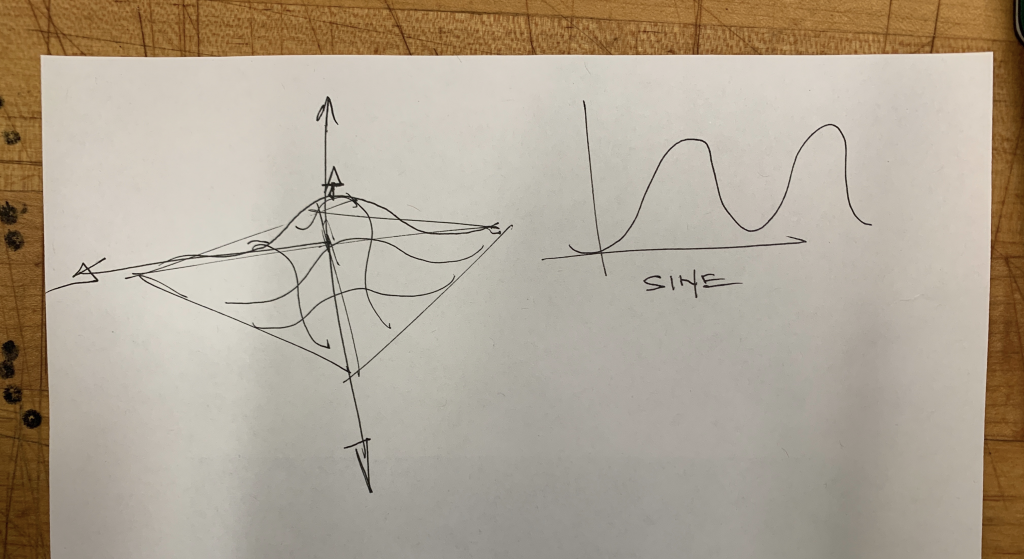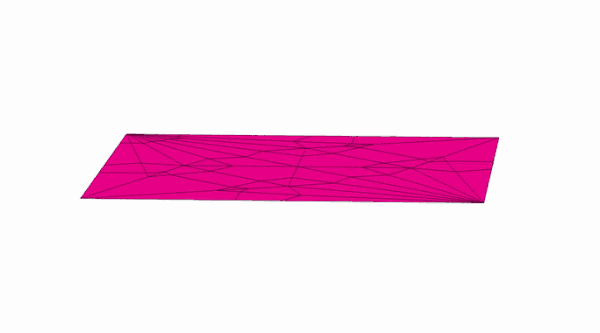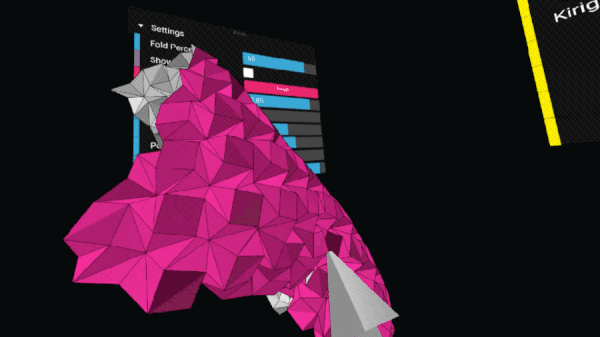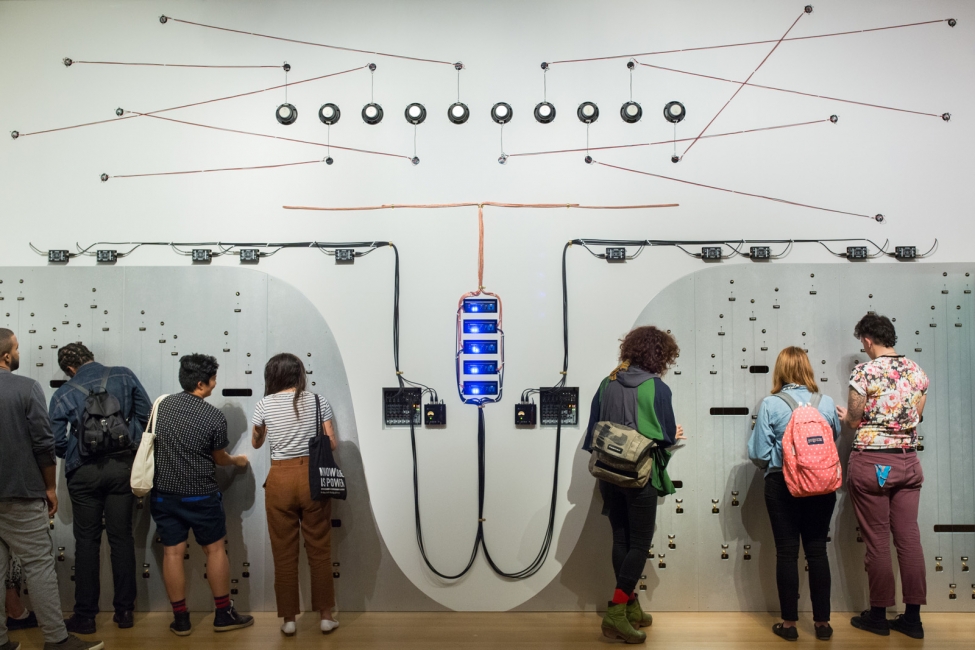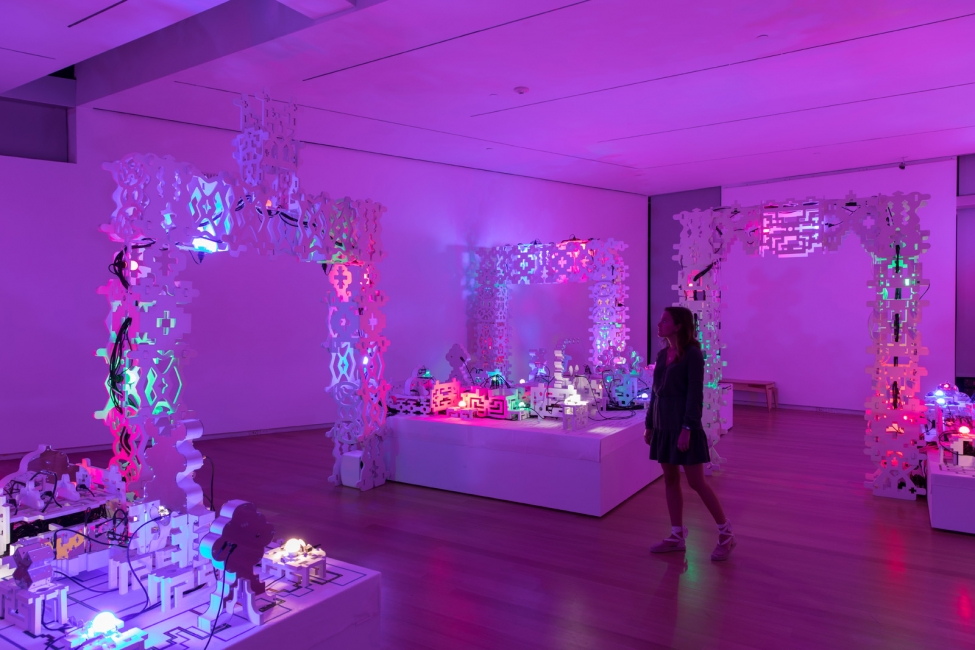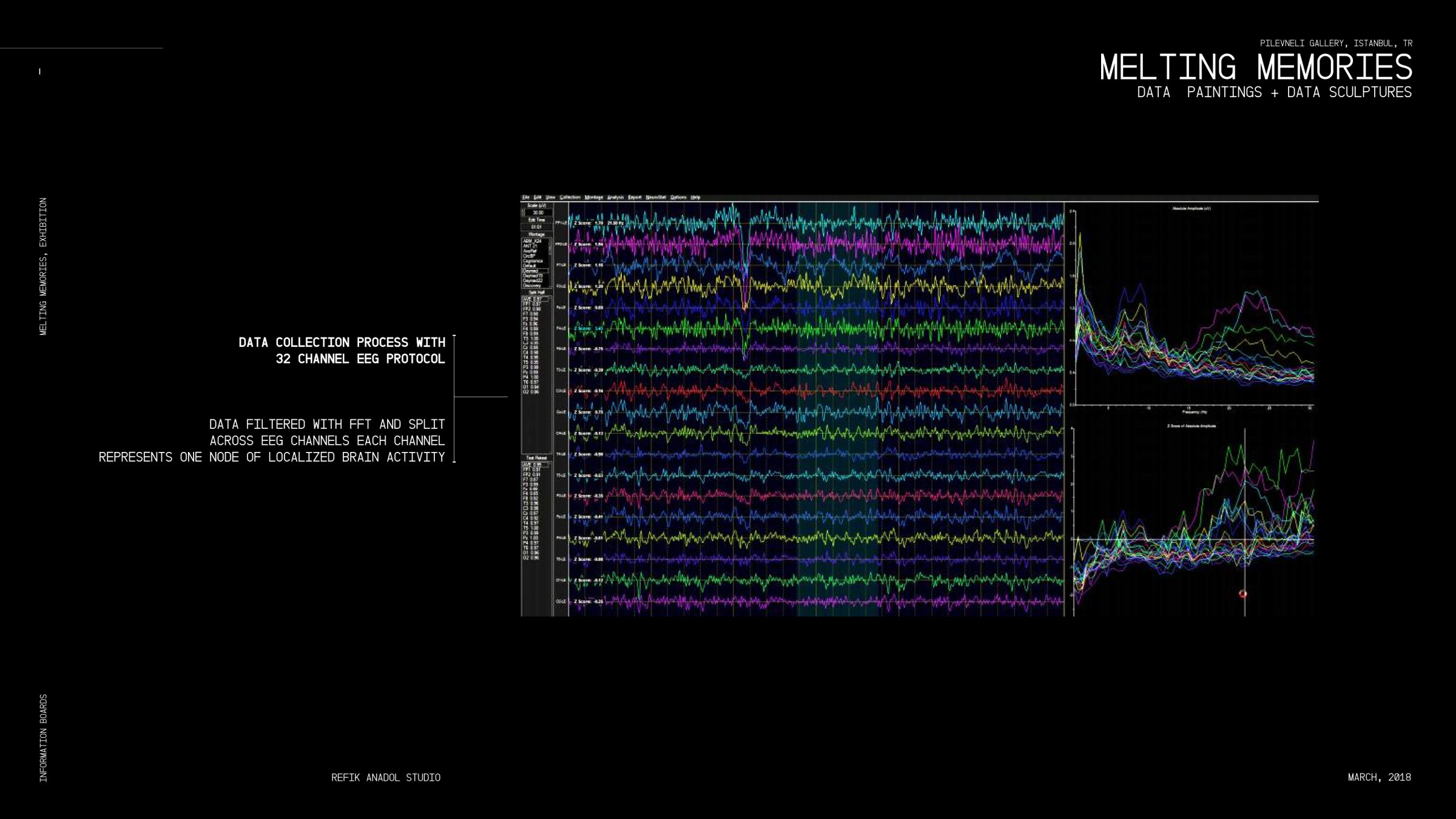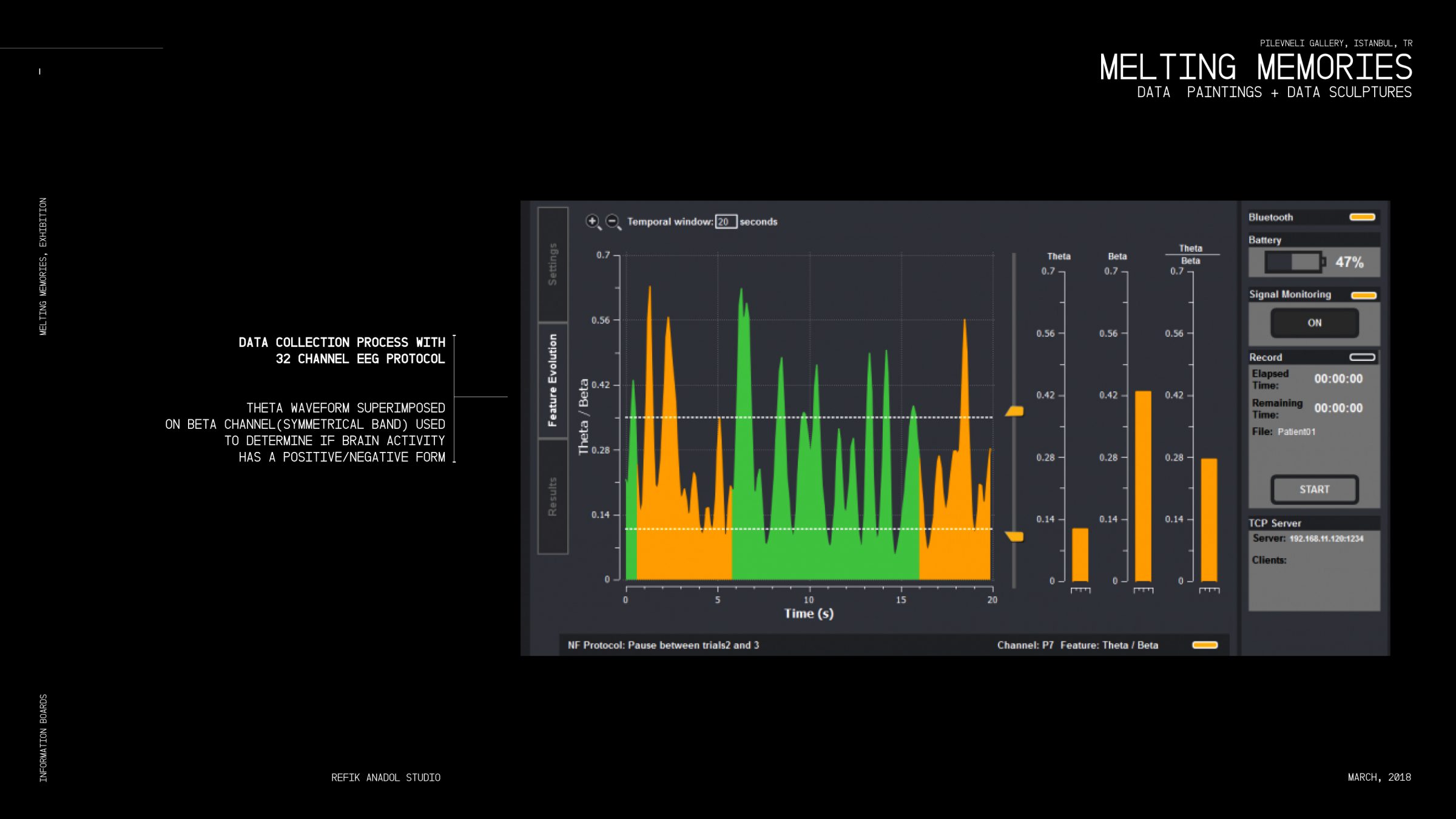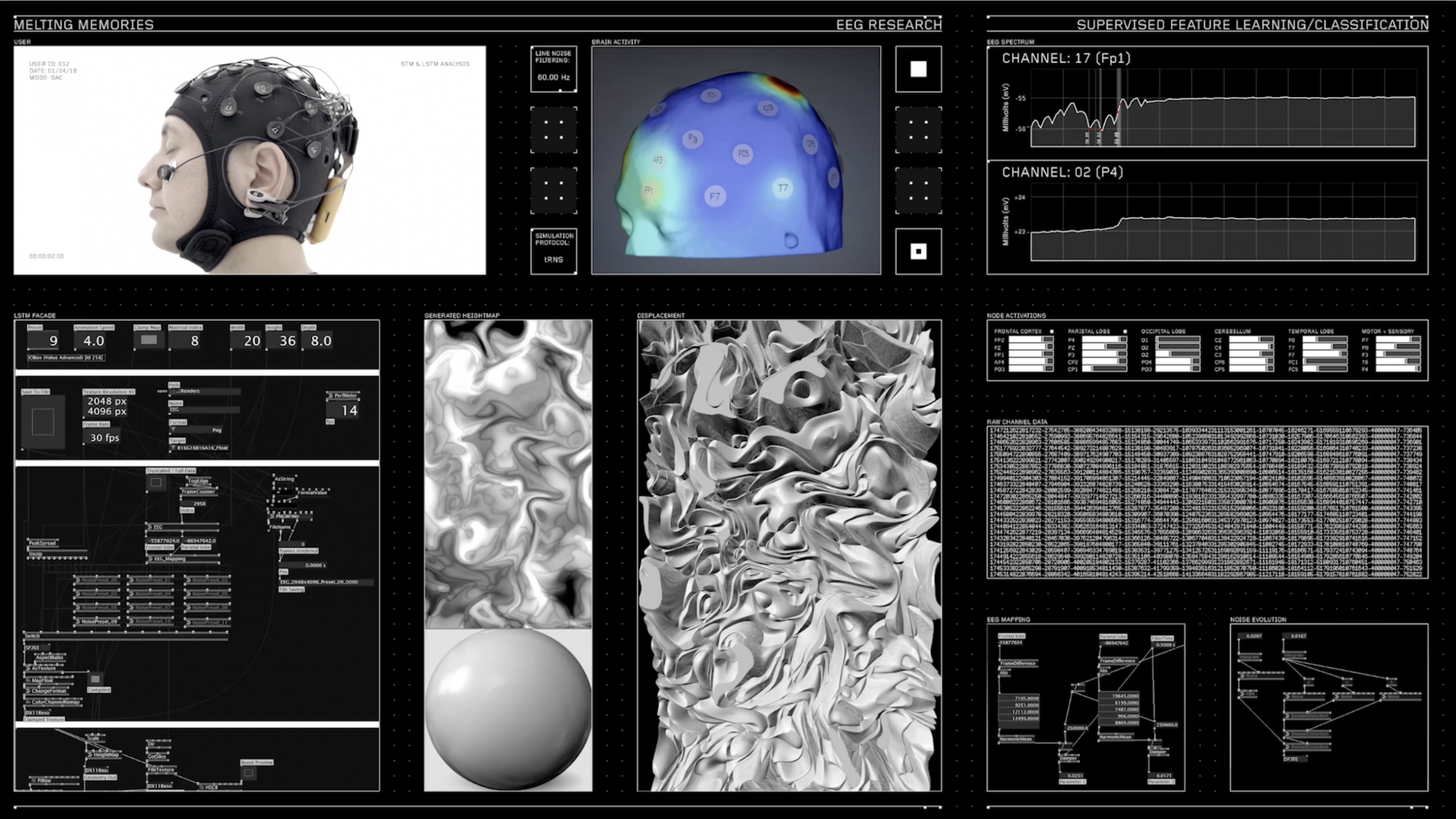// Joseph Zhang
// 15-104 Final Project
// Section E
var rectangles = [];
var gutter = 30;
var totalRows = 15;
var totalCols = 15;
var centerCol = totalCols / 2;
var centerRow = totalRows / 2;
var rectH = 70;
function setup() {
createCanvas(450, 450, WEBGL);
// PUT RECTANGLES INTO ARRAY
for( x = 0; x < totalRows; x++) {
for ( y = 0; y < totalCols; y++) {
rectangles.push(createCube(x * gutter, y * gutter, x, y));
}
}
}
var bgColor;
var bg = 0;
function draw() {
rotateY(map(mouseX, 0, height, -.15, .15));
rotateX(map(mouseY, 0, height, .15, -.15));
translate(map(mouseX / 10 , 0, width / 10, -10, 10), map(mouseY / 10 , 0, height / 10, -10, 10), 0);
//INTERACTIVE CONTROLS - UP AND DOWN
if( keyIsPressed & keyCode === LEFT_ARROW) {
if( rectH > -200) {
rectH -= 3;
print(rectH);
}
}
else if( keyIsPressed & keyCode === RIGHT_ARROW) {
if( rectH < 100) {
rectH += 3;
print(rectH);
}
}
// COLOR BACKGROUND
if(bgColor) {
if ( bg > 0) {
bg -= 20;
}
}
else{
if( bg < 255) {
bg += 20;
}
}
background(bg);
rectMode(CENTER);
rotateX(radians(40));
translate( - width / 2, - height / 2 + 15, 0);
// REPEATEDLY DRAW EVERY PRISM IN DRAW
for( i = 0; i < rectangles.length; i++) {
rectangles[i].drawRect();
rectangles[i].raiseRect();
}
}
// CUBE OBJECT
function createCube(row, col, r, c) {
var rectObj = {
w: 19,
xPos: row,
yPos: col,
offset: dist(r, c, centerCol, centerRow),
currentHeight: this.offset,
// UPDATES THE HEIGHT OF RECTANGLE
drawRect: function() {
if (this.currentHeight > 0) {
fill(map(this.currentHeight, 10, 70, 0, 255));
}
else{
fill(map(this.currentHeight, 10, 70, 0, -255));
}
push();
translate(this.xPos, this.yPos , this.currentHeight);
box(this.w, this.w, this.currentHeight);
pop();
},
// CHANGES THE HEIGHT THROUGH MAPPING CANVAS
raiseRect: function() {
this.currentHeight = map( sin(this.offset), -1, 1, 10, rectH);
this.offset += .1;
}
}
return rectObj;
}
// IF ENTER KEY IS PRESSED, CHANGE BACKGROUND
function keyPressed() {
if( keyCode === ENTER) {
bgColor = !bgColor;
}
}INTERACTIVE CONTROLS (click on canvas first):
LEFT ARROW: Decrease wave amplitude
RIGHT ARROW: Decrease wave amplitude
ENTER: Change background color
***IF LAGGING, VISIT https://editor.p5js.org/jxsephz/sketches/9Dqxil-1P
————————
For this project, I wanted to experiment with manipulating forms in three dimensional space. As someone who loves mathematical patterns, I explored ways that I could utilize the oscillation of a Sine wave.
![[OLD FALL 2019] 15-104 • Introduction to Computing for Creative Practice](https://courses.ideate.cmu.edu/15-104/f2019/wp-content/uploads/2020/08/stop-banner.png)
